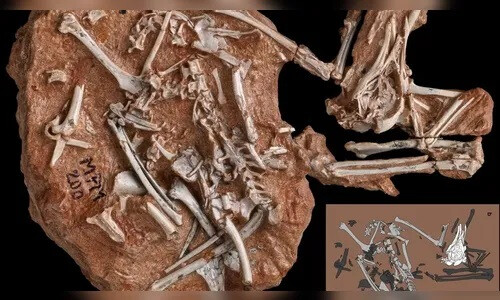
Brazil – Paleontologists have unearthed a new species of bird fossil dating back to the Late Cretaceous period. Named Navaornis hestiae, the fossil was found in 80-million-year-old rocks in the Adamantina Formation near Presidente Prudente, approximately 558 kilometers from São Paulo.
The fossil, described in a study published in the journal Nature on Wednesday, consists of an almost complete skull with toothless jaws, along with parts of the skeleton and a braincase. Its three-dimensional preservation places it evolutionarily between the Mesozoic birds known as Enantiornithes (135-66 million years ago) and modern birds, Neornithes.
"It's difficult to say for certain whether the changes over 80 million years were related to ecology or behavior," says Guillermo Navalón, a researcher and one of the study's authors. The team plans to search for and study other intermediate fossil birds to better understand how these transformations occurred.
The animal also shares some features with extinct birds like Archaeopteryx – the famous fossil bird found in Solnhofen, Germany – and toothless birds from the Jurassic period of China.
This discovery offers a fascinating glimpse into the evolution of birds and sheds new light on the diversity of avian life during the Cretaceous period. As researchers continue to explore the fossil record, we can expect to learn even more about the origins and diversification of these fascinating creatures.
[Copyright (c) Global Economic Times. All Rights Reserved.]






























